In modern society, many men shy away from wearing copious amounts of jewelry, and some avoid wearing it altogether. Gaudy fashion trends and celebrities wearing comical amounts of gold have somewhat cheapened the concept of men’s jewelry over time. While some styles are definitely antiquated, a few can still be worn today–and we’ve got some great examples to share today!
Historically, jewelry was often a signifier of status and power in society. For example, in the Victorian Era, men would commonly be found wearing things like watch chains, signet rings, and other types of jewelry. In fact, it’s safe to say that there was a wider variety of jewelry options for men in the past, many of which have become obscure as they’re no longer worn by the modern man.
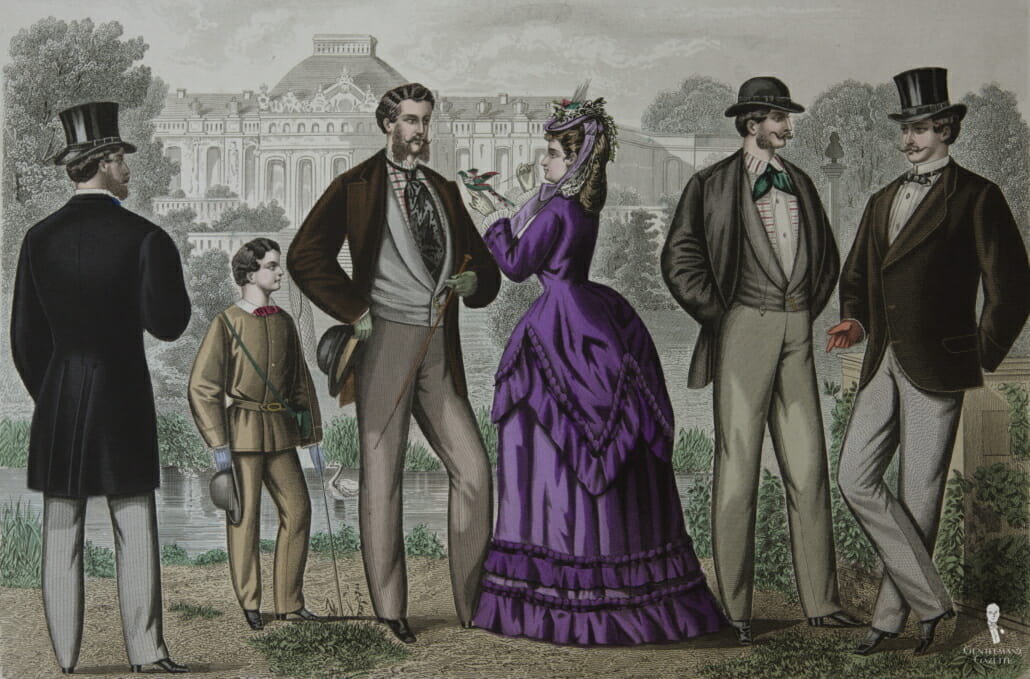
Other than items like cufflinks, a wristwatch, or, perhaps, a ring, there’s a general lack of variety in men’s jewelry options today, so the obscure items we’ll cover are going to be more classical in nature.
10 Obscure Men’s Accessories & Jewelry – Neckwear
Let’s start in the realm of neckwear. We won’t be covering the subject of necklaces, specifically, but if you’d like to know more about them, our guide to the seven do’s and don’ts for men’s jewelry has you covered.
1. The Collar Stud
Modern shirt collars, of course, are attached to the shirt, so everything is in one finished piece. But as early as the 1820s, men’s collars were detachable, and it was easier and cheaper to launder just the collar of a shirt as opposed to the entire thing. As we all know, the collar is, of course, the first part of a shirt to often become dirty or need repair.
These collars that were separate pieces from the shirts were starched and made stiff, given the consistency of cardboard. However, because of their stiffness, these collars couldn’t simply be buttoned or tied to the body of the shirt, so a piece of jewelry had to be invented: the collar stud.
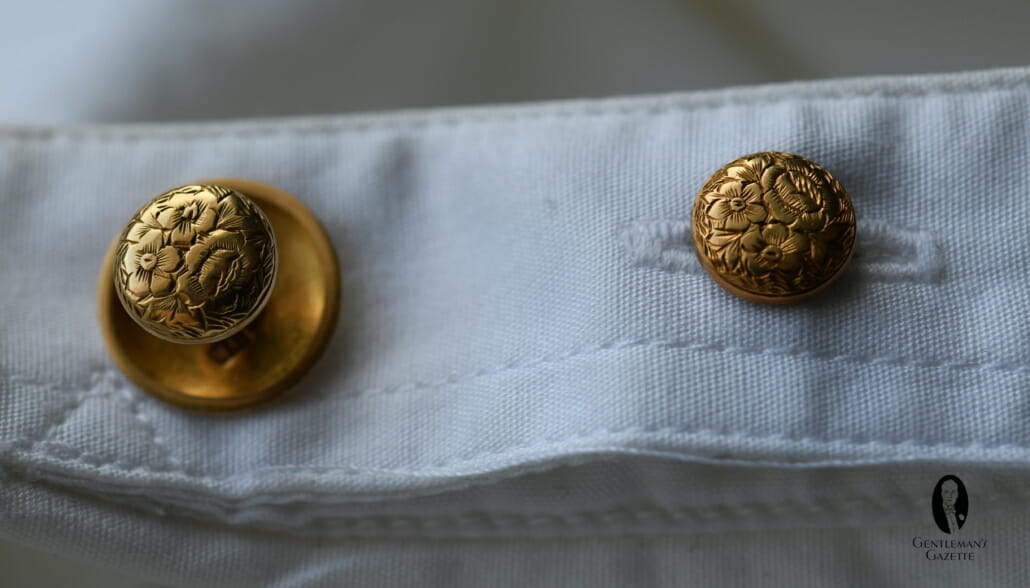
The most common style of collar stud is gold-plated with a round head, but they do come in many of their varieties. They could be made from gold or silver and also feature precious stones. Sometimes, rather than being genuine, these stones could also be fake as well to add an element of visual interest without increasing the price.
You’re not going to see many collar studs today, of course, because detachable collars lost favor around the 1940s. Although, you still can find some retailers who sell them today. And if you want to be entirely traditional, they’re still a staple of specific dress codes like White Tie or formal morning dress.
2-3. Tie Pins and Tie Tacks
Sticking with our neckwear theme, we’ll look at items that are designed to hold the tie in place; tie pins and tie tacks. We have actually covered both of these pieces before, but as they’re increasingly rare and because they fit with the theme, we thought we’d give you a more in-depth historical overview.
In the 1860s, tie pins or stick pins became an increasingly popular option in Britain for the upper and middle classes to hold their cravats in place. This would be accomplished by piercing the pin through both the cravat and the shirt. In addition to being popular in Britain, they made their way across the pond and saw popularity in America starting in the 1870s.
By the 1920s, more slender silk ties were coming into fashion, and so, the tie bar became the object of choice for keeping one’s tie in place, though the stick pin could still be used and, indeed, is sometimes seen today.
Roundabout the 1950s, a sort of little sibling to the stick pin, became popular called “the tie tack.” This was a small pin that would be pierced through the tie and then inserted into a backing piece attached to a chain with a T-bar. The t-bar would then be passed through the buttonhole of the shirt, keeping the entire assembly in place.
While it was safer for the wearer than the traditional stick pin, these tie tacks still could potentially damage a tie slightly. They’re not commonly seen today, but some retailers do still stock them.
4. Tie Ring or Scarf Ring
To wear one of these, you would simply pass both ends of the tie or scarf through the ring and then pull it up to your neck to fasten.
This style first became popular in the 1860s and remained a staple of both formal morning wear and casual wear up until the 1930s, where it was favored by both King Edward VII – pictured wearing a scarf ring in 1863 – as well as his son King George V – pictured in 1928. The scarf ring was a particular favorite of King George V, and he was often photographed and painted wearing this accessory.

The ring could be a plain and simple band, could look more like a signet ring, or could be even more ornate in design. George V even wore his rings with more pieces of collar jewelry – a look that we probably wouldn’t recommend today as it is a bit too ornate.
This style is still readily available in various retail outlets in Japan. And if you search online, you’ll be able to find offerings from other places in Asia, where it’s often shown paired with a conventional necktie.
5. Collar Chain
A slightly more modern example of collar jewelry that’s experiencing a bit of resurgence among the hipster crowd is the collar chain. This item consists of a chain that’s attached to two pieces that are then inserted through each leaf of a collar, leaving the chain hanging across the collar spread. Other versions include collar bars with chains attached or clip-on styles.

Like any piece of jewelry, they run the risk of being a bit garish and gaudy, however, so we think they’re better suited for a more modern, fashion-forward look than classic menswear. Furthermore, while you will sometimes see it suggested online by fashion outlets, we wouldn’t recommend wearing them to any formal event as they don’t quite follow traditional dress codes.
Gadgets
Moving on from neckwear, let’s next take a look at a category of items that could be summed up as gadgets.
6-7. The Trench Watch and The Wristlet
As timepieces go, these two items are probably the most obscure. Everyone today is likely familiar with the conventional wristwatch, and most people are probably aware of the pocket watch. But we would guess that few are familiar with these two items, which ultimately serve to bridge the gap between the other two styles.
Although the Guinness Book of World Records claims that the first wristwatch was made in 1868 by Patek Philippe for a Hungarian countess, the pocket watch was a popular choice for men well into the early 20th century as the wristwatch was originally considered feminine.

Meanwhile, the first modern wristwatch is typically credited to Girard Perregaux, who, as the story goes, had begun to make wristwatches in 1880 for the navy at the request of Kaiser Wilhelm I. When wearing a wristwatch, the naval officers could use both hands for all operations, even if they needed to check the time occasionally.
Meanwhile, another form of an early wristwatch is the wristlet. These are thought to have been in circulation during the late 1880s, commissioned by military and cavalry officers looking for an alternative to the inconvenient pocket watch.

However, the first actual patent for one of these devices arrived in 1893, at which point the wristlet became a valuable commodity. These wristlets were actually just a leather strap that simply held a pocket watch to one’s wrist, and they were suitable for soldiers riding on horseback and were sported by British troops in India.
They even found their way into civilian use and were marketed as cycling wristlets. And although companies like Wilsdorf & Davis, which would later become Rolex, were experimenting with wristwatch styles as early as 1905, it would take a devastating world event for wristwatches to become more widely worn.

Fast forward to World War I, then, and pocket watches, again, became impractical, especially in the dirty, grueling conditions of trench warfare. As we mentioned earlier, wristwatches were rejected by most men as being “too feminine,” but the war made them rethink their options.
With smoke and gas weapons, lots of explosives, and early airpower, for the first time in the history of war, generals really couldn’t see much of what was happening on the battlefield, so everything came down to timing. Since as little as 30 seconds could be the difference between victory and defeat, fumbling around with a pocket watch simply wasn’t an option. So, the trench watch was born.
Essentially, the trench watch was almost half pocket watch and half wristwatch with the case opening in the front and back like a pocket watch, but with metal wire lugs for attaching a leather strap much like a modern wristwatch. This was an improvement on the earlier leather pocket concept that was seen on many wristlet designs.
The trench watch represented an important stepping stone in the development of men’s timepieces. Because of its military applications, it led to the wristwatch eventually overtaking the pocket watch as the primary timepiece for most men.
8. Pencil Holders and Toothpick Holders
Interestingly, enough the origins of the toothpick itself actually predate recorded history. We can look at Neanderthal skulls that have damaged teeth, likely from the use of picking tools.
Of course, with that said, a toothpick might not be your first thought when it comes to men’s jewelry. But from the 18th century up through the beginning of the 20th, one way that many men showed their wealth and status was to carry around toothpicks made from precious metals and, sometimes, featuring stones.
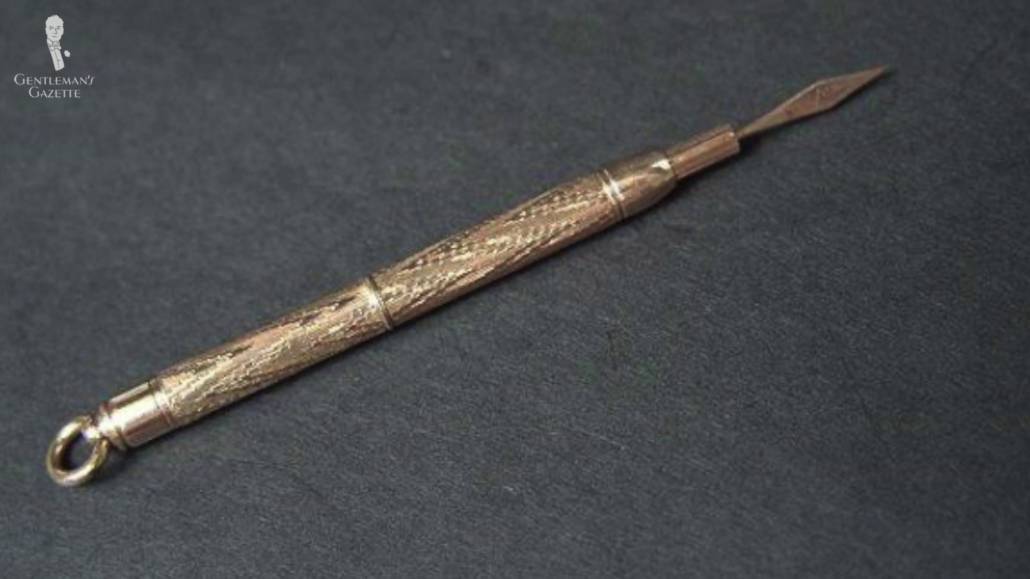
Eating a large, multi-course meal at an expensive restaurant has always been a way to show off one’s wealth, and capping off the meal by picking one’s teeth with a bejeweled golden toothpick was an excellent way to show off the sumptuousness of the meal you just had.
Even so, it was seen as ostentatious in some circles, even when toothpicks like these were commonly being used. An etiquette book from 1889 suggests that a man should not use a toothpick when at the table, and when using one, he should cover his mouth with one hand.
By the 1870s, wooden toothpicks had become popular among the middle and lower classes, so making the upper class’ toothpicks even more gaudy and bejeweled came to be seen as even more of a class signifier.
These bejeweled toothpicks were often worn around one’s neck on a chain, though some were also attached to watch chains, and still, others had their own cases. And what’s more, some of these toothpick designs even had moving parts so that the sharp end could be retracted and stored away safely when not in use.
Some were made from materials like ivory, gold, or sterling silver, and cheaper models were silver plated or made from gilt brass. Some of these were even multi-purpose with a toothpick on one end and an ear scoop on the other.
And similarly to these toothpicks, pencils were also often worn around the neck in decorative holders. These were often retractable and could, again, be worn either around the neck or on a watch chain.
If you’re so inclined to seek out these items, be aware that most antique pencil holders are found on women’s chatelaines, but examples for men can be found out there as well.
9. Retractable Chain Brooch
Retractable chain brooches could be used for pencils, but their primary purpose was to secure spectacles to the body. Although spectacles with arms were invented as far back as the 1720s, designs without arms were popular all the way up until the 1940s or so.
And for much of this period, there was still a societal stigma attached to wearing spectacles. So, designs that could be brought out to be used quickly and then put away discreetly were seen as preferable.
Such designs were perched in the eye socket or on the bridge of the nose. And to stop them from falling off, silk ribbons and strings were used, which were later supplanted by chains and necklaces, which became decorative in their own right.
However, in 1903, a new type of retractable chain was patented by Ketcham and McDougall, a luxury thimble-making company that could expand, lock, and be retracted by a second pole. These were delicate chains made in silver and gold colors that would give a more luxurious look than string or ribbon. For example, a monocle could be connected to one of these chain brooches and sit on the lapel until it was needed for reading. Then, when finished, the wearer could safely retract the chain without having to worry about fumbling around with the monocle in a pocket.

Another style of eyewear commonly worn with the chain is the “pince-nez” or pinch nose-style. And you can see an example of this as worn by Bing Crosby’s character of Alan A. Dale in 1964’s Robin and the 7 Hoods, where you can see that Crosby’s character is wearing a plain black enamel brooch on his lapel.
Most were worn on the lapel or through the buttonhole, many were made from decorative precious metals like silver and gold, or they could be gold-filled. And, as you might expect, more feminine designs were also available for women who needed eyewear.

It would be best if you didn’t confuse this piece with modern plastic retractable cords that are often seen on things like office lanyards. In addition to the metal chain, the thing that sets the Ketcham and McDougall retractable brooch apart is its ability to lock in place.
You may be surprised to hear that some modern retailers and opticians still even stock these pieces. However, they are definitely an obscure and vintage look and should only be worn by men who really want to go for a particular period style of dressing.
10. The Tussie Mussie/Nosegay
Our final piece today is another particularly antiquated one that has two rather silly names: the “tussie mussie” and the “nosegay.” If you’ve heard of this piece at all, you likely associate it with something used by women at weddings or other ceremonial events for flowers.
It has its origins in medieval times as a way to ward off disease or foul smells, more generally. It is a tussie (or knot of flowers) with some mussie (or wet moss) used to keep the flowers fresh.
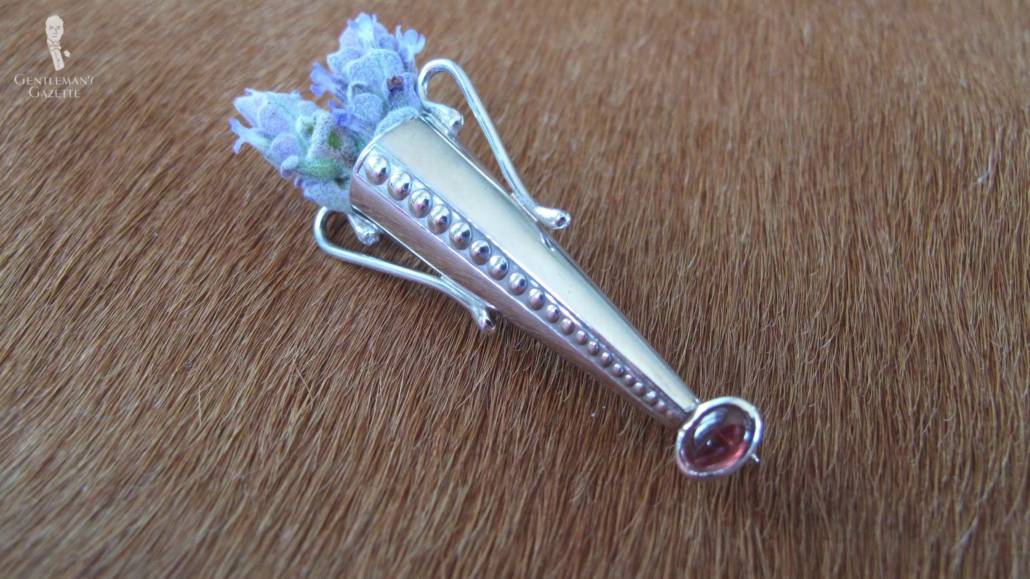
With the historical meaning of the term “gay” being “happy,” one could wear one of these and keep their nosegay by smelling the flowers, which leads to the other name for this piece. Over time, these terms began to refer to the cup or holder for the flowers rather than for the flowers themselves. And, as you might have guessed, these holders could be incredibly ornate and made from precious metals.
So, how does this relate to classic menswear, then? Well, smaller tussie mussies were worn similarly to lapel pins as one might wear a boutonniere today. They often resembled the shape of a full-sized tussie mussie but, of course, much smaller in size. A gentleman could add a few drops of water to keep his flowers fresh throughout the day and avoid wilting, which is why they’re sometimes referred to by a third term: “water reservoirs.”
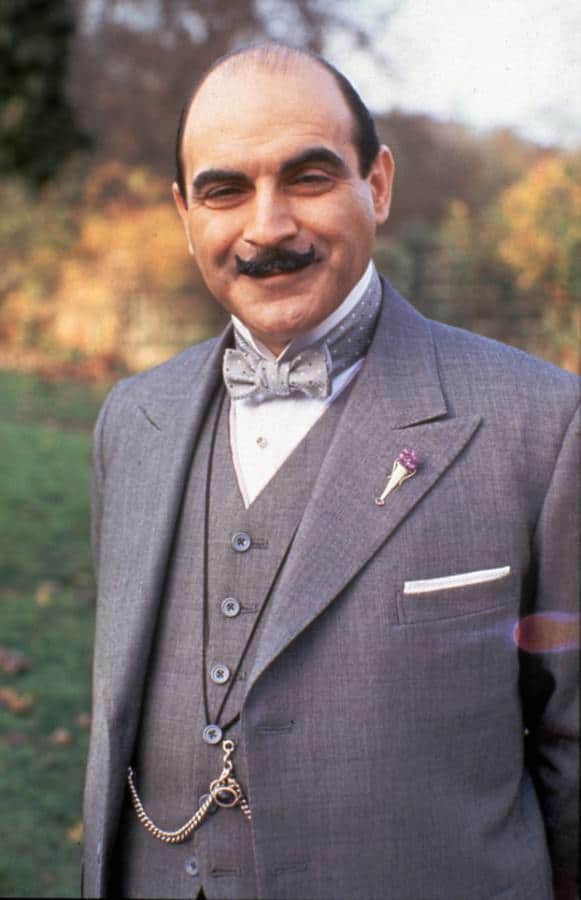
One place you may have seen them is as a costume feature on David Suchet’s Hercule Poirot. Of course, the more decorative types often feature holes through them and, thus, can’t hold water. So, if you wanted to use a tussie mussie to actually wear flowers, we’d recommend that you do it as Poirot does and go for the more practical approach.
Today, larger tussie mussies are still used by women at weddings, but the lapel pin versions are sometimes worn by men at more traditionally-styled ceremonies. But, as we’ve discussed before, the more practical long-term option would be to go with a high-quality faux boutonniere, such as the ones we offer in the Fort Belvedere shop.
Conclusion
As you can see from our list, there was definitely a wider variety of jewelry available to men in the past. Some of these designs are antiquated, some are completely defunct and obsolete, but some could still be useful today. Of course, there are other obscure items that we didn’t touch on today, like cuff holders or bachelor buttons.
Do you own or still wear obscure men’s jewelry pieces? Share your story or outfit ideas in the comments section! If you want to see more obscure men’s jewelry and items such as the rimless monocle, check out the Antique Menswear youtube channel.
Outfit Rundown
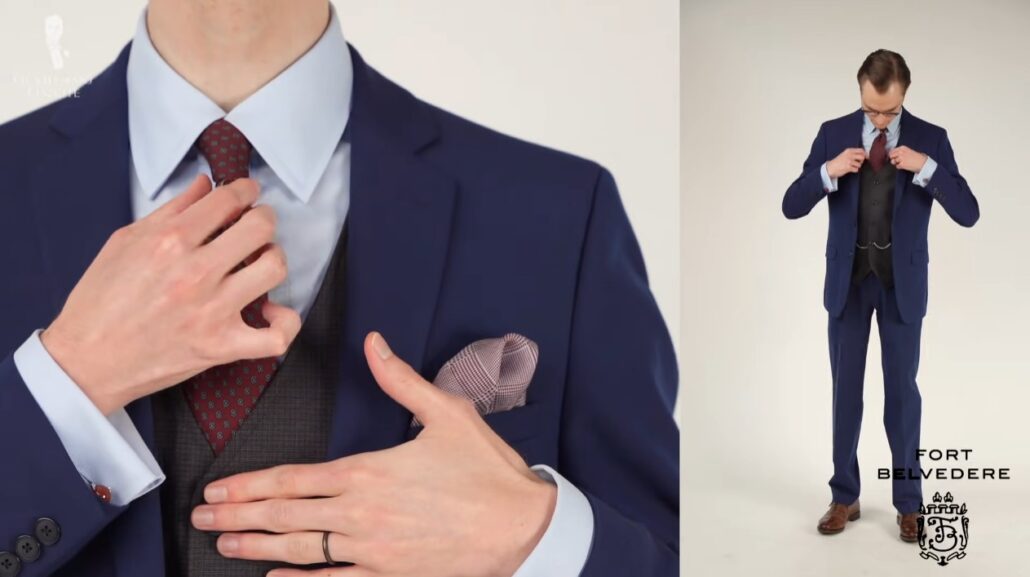
As most of the items we discussed today are quite antiquated, I’m not wearing many of them today.
However, in the spirit of things, I have tried to incorporate a bit more jewelry like wearing a tie ring here and also wearing a pocket watch. Both of these are in silver and the ring features carnelian as its stone. Thus, to harmonize with these elements, I’ve chosen our platinum-plated sterling silver eagle claw cufflinks from Fort Belvedere also featuring carnelian as the stone.
My tie and pocket square are both vintage models, and they feature red and gray colors to harmonize with my jewelry pieces. I’m wearing a royal blue suit and a pastel blue shirt as well as an odd waistcoat with a subtle checked pattern. Rounding out the outfit today are my shoes, which are brown cap-toed Oxfords from Allen Edmonds, and a pair of socks from Fort Belvedere in navy blue featuring a clock pattern in blue and white.
I chose not to wear a boutonniere today as I didn’t want too many elements of visual interest to overwhelm the
outfit. But, as I said, you can find a wide variety of boutonnieres in the Fort Belvedere shop, along with other sock styles and cufflink styles as well.


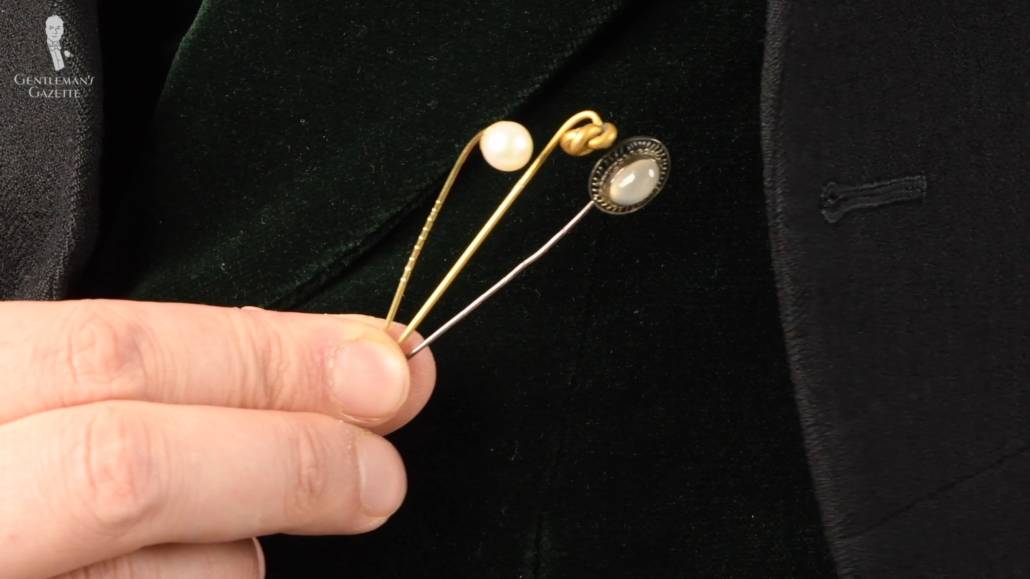


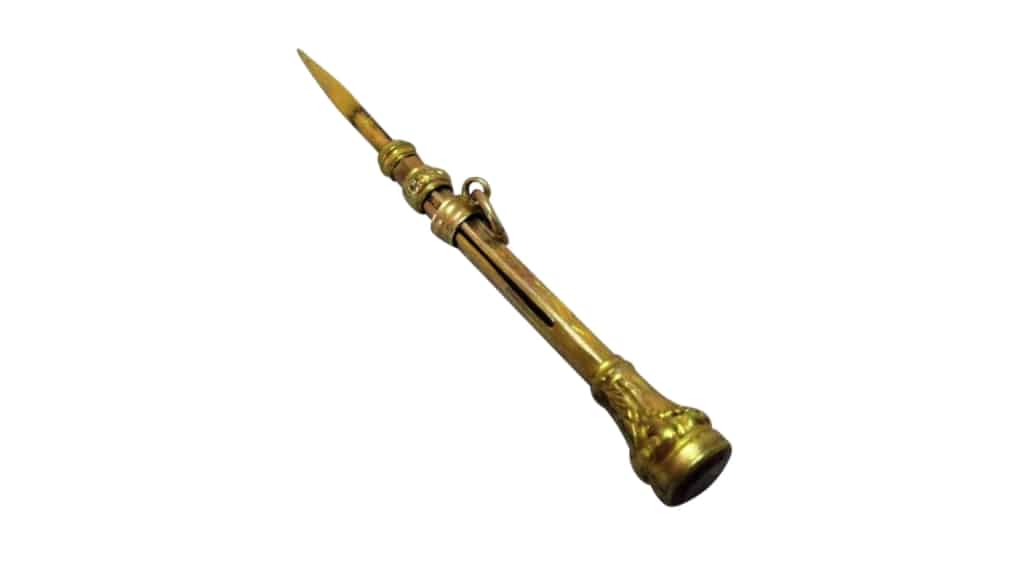
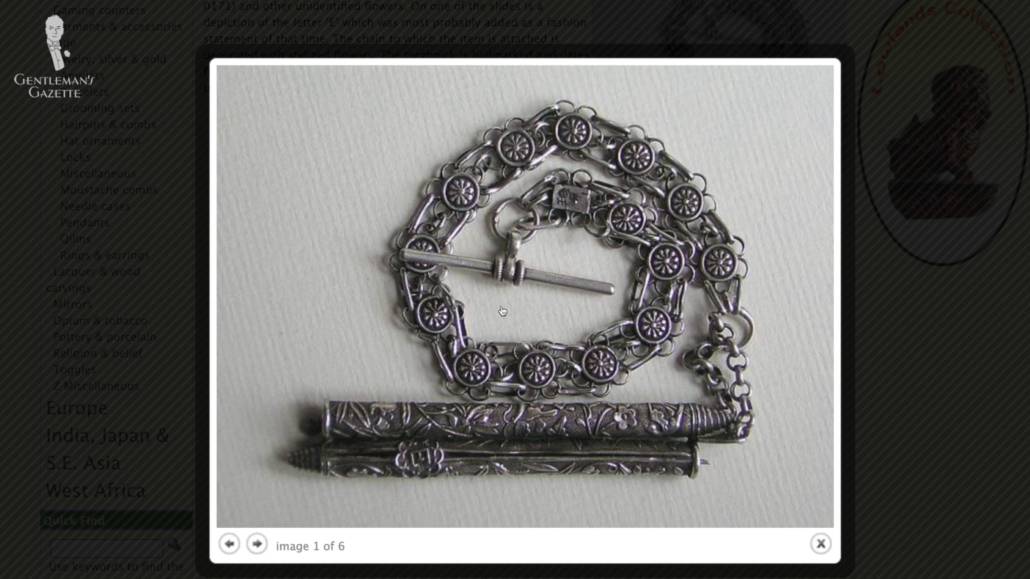


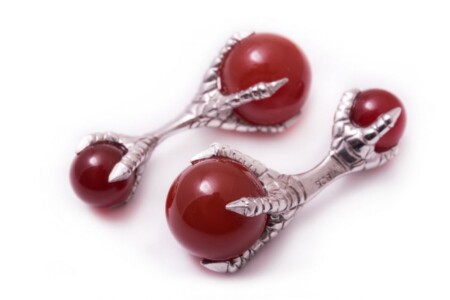
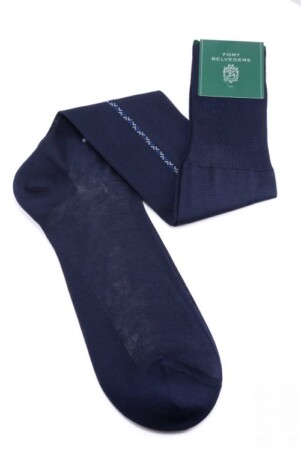
I remember having a tie pin that I wore as a boy or a young man in the 1970s.
But how sad that I came into the world too late to get an ear scoop! :-D
I don’t prefer mens jewelry, as you say, extreme use of mens jewelry just, to me, isn’t tasteful or useful; i.e. chain necklaces, etc. Best wishes—
My mother gave me my great grandfather’s diamond and gold sticking he wore on his wedding day in 1890. I regularly use it as a tie pin, as I have for almost 50 years: snazzy and elegant, methinks.
Wow! ❤️
Aha! I do have one of these – the tussie mussie, inspired entirely by Hercule Poirot’s wearing of one. I shopped for a long time to find the right one. Mine is an antique, definitely holds water, and is one of my favorite accessories. For quite a while, I kept a small planter of tiny flowers, and would clip one when required and wrap the stem in a tiny bit of wet paper towel to keep the flower fresh. Then the squirrels ate all the flowers and I haven’t replaced them yet.
Your usual excellent job, Preston. Bravo!
Yes Preston very interesting ❤️
I have a good number of detachable collars which I find to be very stylish and distinguished. I also have an ornate hand carved victorian pen. It is made out of silver and is just beautifully designed. Men should not shy away from jewelry that creates a gentlemens mood . I dont smoke but I would not hesitate to acquire an ornate hand carved wood and pearl Sherlock Holmes type smoking pipe. I would hold it in my hands and fake like I am smoking it lol !!! I enjoy every aspect of the gentleman’s persona.
Great piece Preston. Love any info on sartorial obscura. Do more videos like this.
Has anyone ever used a stick-pin (tie pin) on their jacket’s lapel?
Wow! ❤️